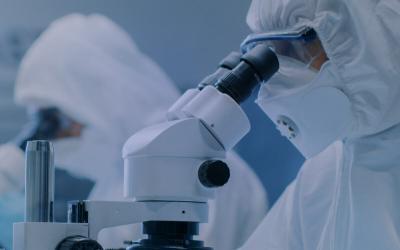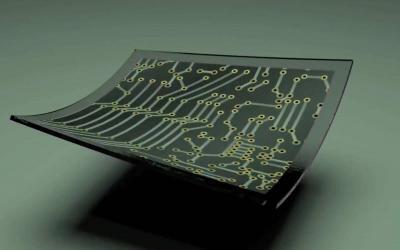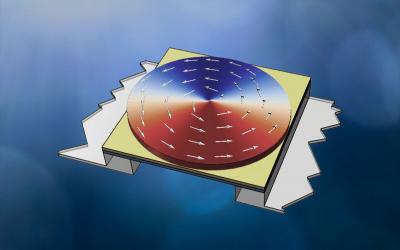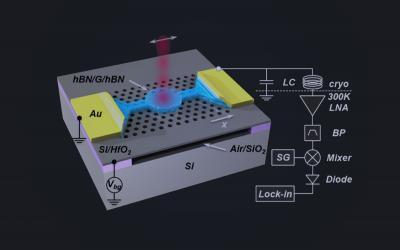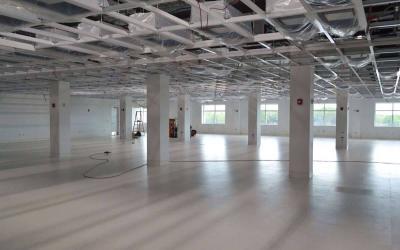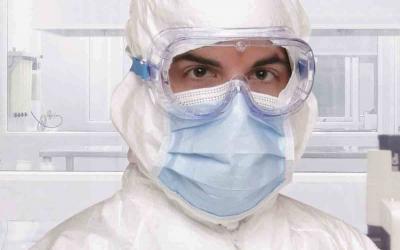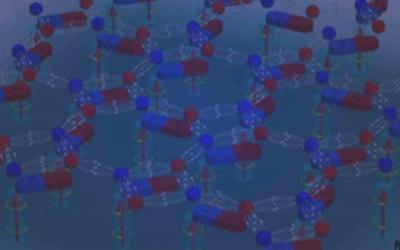Graphene Carpets Improve Neuron Communication
A work led by SISSA and published on Nature Nanotechnology reports for the first time experimentally the phenomenon of ion ‘trapping’ by graphene carpets and its effect on the communication between neurons. The researchers have observed an increase in the activity of nerve cells grown on a single layer of graphene.
Thin-Film Transistors Made Easy with AHPCS Shearing Blade
A flexible, durable and solvent-resistance inorganic polymer. (Allylhybridpolycarbosilane or AHPCS) was used to fabricate the microstructured AHPCS shearing blade. The wet-ability of the AHPCS micropillar surface is tunable. By controlling the shearing rate and the substrate temperature, crystal growth can occur along the moving blade.
Minimalist Biostructures Designed to Create Nanomaterials
Researchers of the Institute of Biotechnology and Biomedicine (IBB-UAB) have achieved to generate 4 peptides -molecules smaller than proteins – capable of self-assembling in a controlled manner to create nanomaterials. The research, published in the journal ACS Nano, was conducted by Salvador Ventura, Marta Díaz and Susanna Navarro (IBB-UAB), and included the collaboration of Isabel Fuentes and Francesc Teixidor (Institute of Materials Science of Barcelona, ICMAB-CSIC).
Nano Decorations Remove Water Contaminants
A Recent Study Shows how Grains of Sediment and Nano Decorations Capture & Release Impurities in Water. When bacteria and viruses get into well water and make people sick, often the contamination comes after heavy rain or flooding. In 2000, more than 2,300 people in Walkerton, Ontario, got sick when, after unusually heavy rains. E. coli bacteria found their way to drinking water wells. Seven people died.
New Magnetic Sensors Prove Better Performance and Accuracy
Magnetic sensors play a key role in a variety of applications, such as speed and position sensing in the automotive industry or in biomedical applications. Within the framework of the Christian Doppler Laboratory “Advanced Magnetic Sensing and Materials” headed by Dieter Süss novel magnetic sensors have been realized that surpass conventional technologies in performance and accuracy in a cooperation between the University of Vienna, the Danube University Krems and Infineon AG.
Bolometers a Better Device for Measuring Electromagnetic Radiation
Bolometers, devices that monitor electromagnetic radiation through heating of an absorbing material, are used by astronomers and homeowners alike. But most such devices have limited bandwidth and must be operated at ultralow temperatures.
How to Clean a Biosafety Cabinet
10 Easy steps to cleaning a contaminated surface in the biosafety cabinet. The biosafety cabinet is a laboratory workspace that ensures safety and cleanliness for both the person operating in the cleanroom as well as the products or materials being handled in the cleanroom. The biosafety cabinet creates a safe environment for working with drugs, chemicals or hazardous materials.
Dialog Semiconductor Enters Growing Haptics Market
Dialog Semiconductor, a provider of highly integrated power management, AC/DC power conversion, charging, and Bluetooth® low energy technology, today unveiled the DA7280, a new Haptic Driver Integrated Circuit (IC). The device is capable of driving both ERM (Eccentric Rotating Mass) and LRA (Linear Resonant Actuators) motors
Center for Neovation in Neocity
Intensely focused on the future, the Center for Neovation, formerly known as the Florida Advanced Manufacturing Research Center (FAMRC) was designed and constructed in 24 months.
Should I Use Reusable Cleanroom Garments?
It’s time to reconsider using reusable cleanroom garments. The continuous washing wearing and sterilization cycles of reusable cleanroom garments constantly degrade the properties of the fabric reducing their effectiveness.
Semiconductor Manufacturing Facility Expansion
ON Semiconductor Corporation (Nasdaq: ON), driving energy efficient innovations, is excited to announce the expansion of their manufacturing facility in Rochester, New York. The site develops and manufactures image sensor devices for commercial, industrial and professional imaging applications, including machine vision, surveillance, traffic monitoring, medical and scientific imaging and photography.
New Superconductor Design allows for better control at the nanoscale
New Superconductor Design presents a better superconductor with geometric frustration. Superconductors contain tiny tornadoes of supercurrent, called vortex filaments, that create resistance when they move. This affects the way superconductors carry a current. A new superconductor design creates potential making them better for applications.
